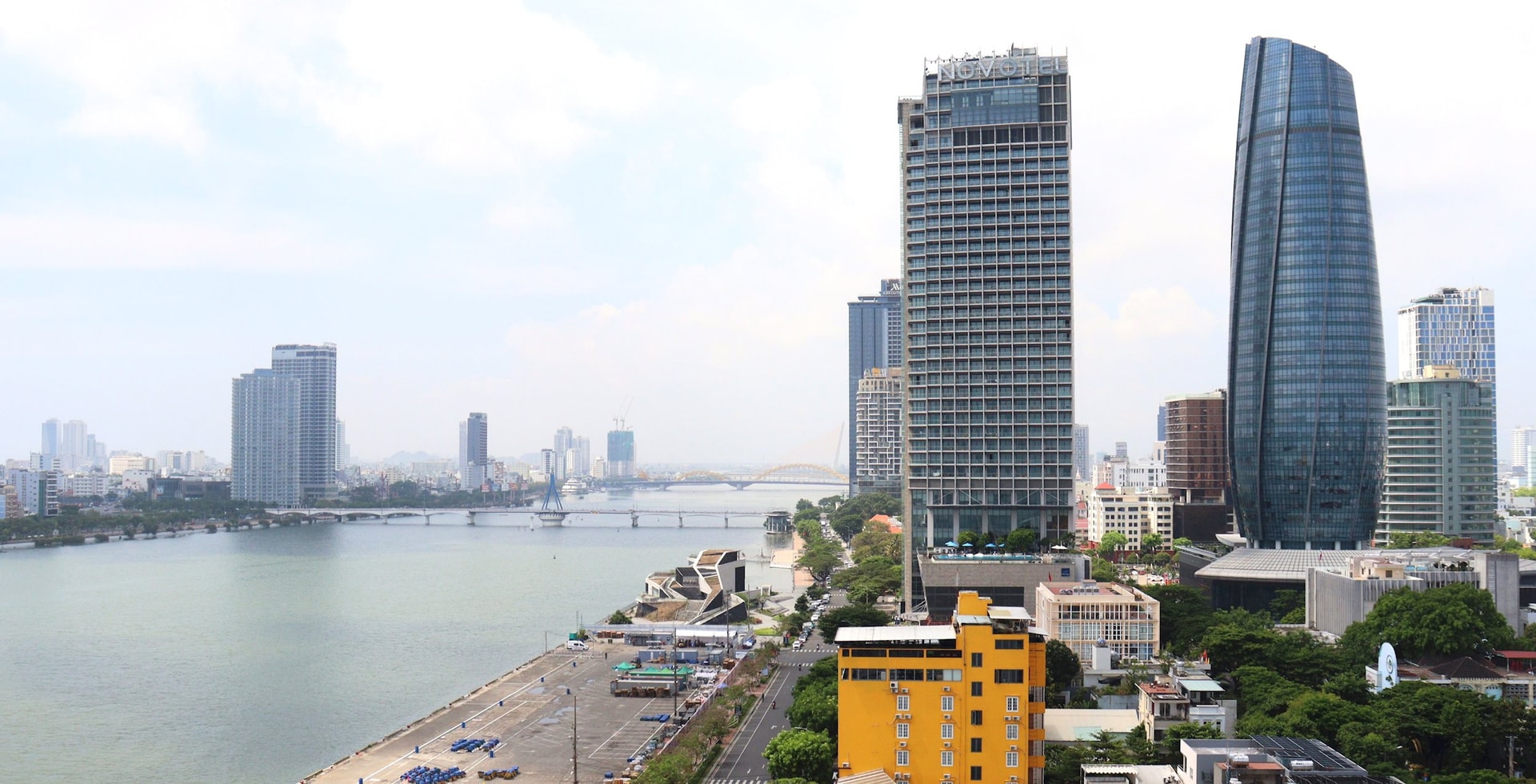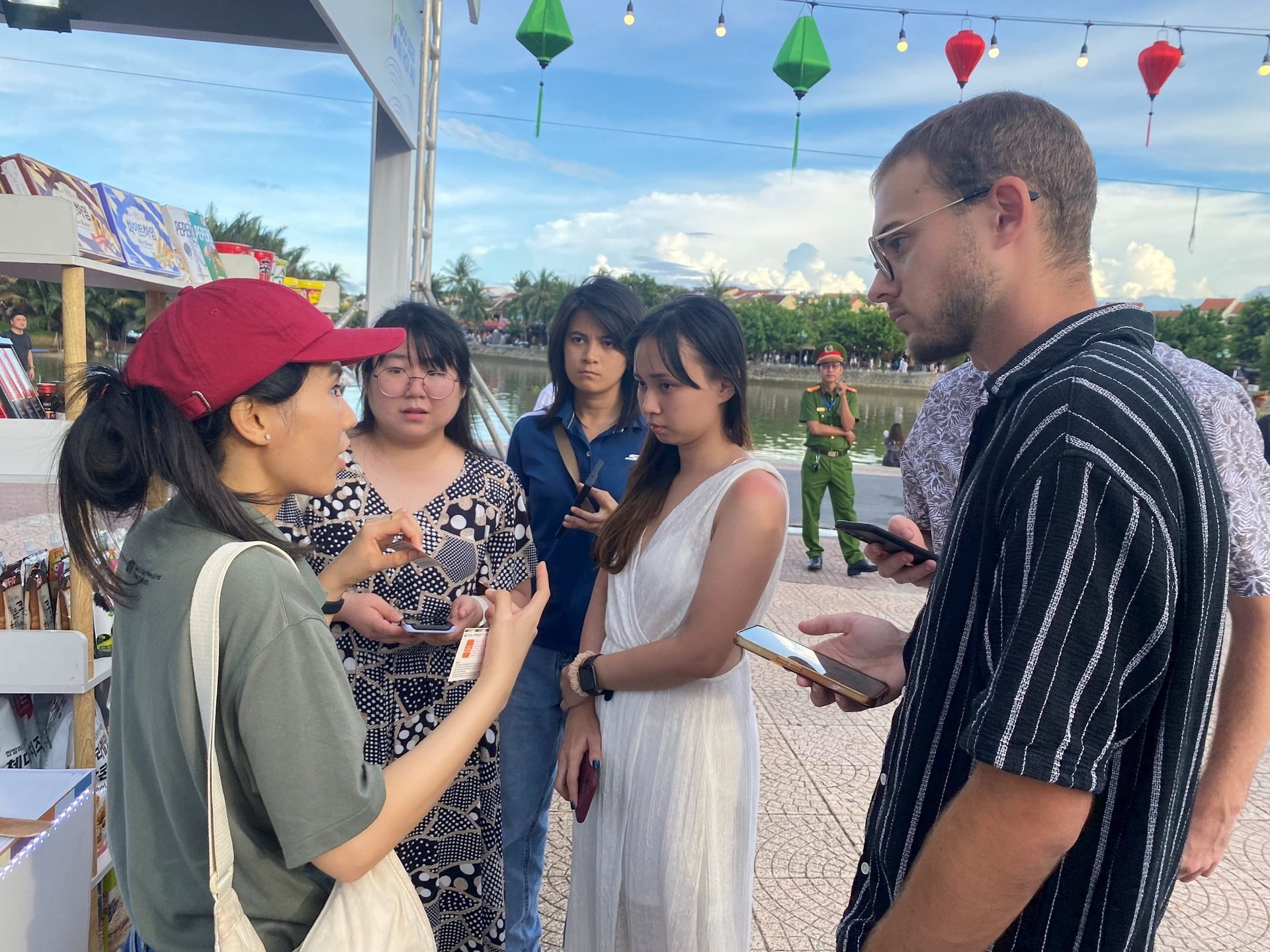
Divide and Grow
More than 50 years ago, Da Nang was the provincial capital of Quang Nam - Da Nang province. The city had only 3 districts: District 1 in the center, District 2 from Cai Lang intersection to Hue intersection, District 3 on the east side of the Han River.
As a city equivalent to a district, it did not have its own space and mechanism for development. Faced with that situation, the leaders of Da Nang city and Quang Nam - Da Nang province at that time had many concerns.
At the 4th Congress, the Da Nang City Party Committee (May 8, 1989) unanimously proposed to the Central Government and the Quang Nam - Da Nang Provincial Party Committee to allow Da Nang City to be directly under the Central Government, and if it did not meet the conditions, to become a special economic zone.
By the end of 1996, the Central Government agreed to divide Quang Nam - Da Nang province into two administrative units directly under the Central Government, Quang Nam province and Da Nang city from January 1, 1997.
At the time of separation, Quang Nam province had a natural area of 10,406.34 km 2 , a population of over 1.3 million people, and the provincial capital was located in Tam Ky town. The number of administrative units under the province included 12 districts and 2 towns.
Da Nang city has a natural area of 1,284.88 km 2 , a population of about 700,000 people, has 6 districts and 2 counties, of which Hoang Sa island district has an area of 305 km 2 .
After more than 28 years of construction and development, Quang Nam and Da Nang have changed a lot.
From a purely agricultural province, Quang Nam has made a breakthrough in shifting its economic structure towards industry and services, with the economic scale in 2024 reaching nearly 129,000 billion VND with the service structure accounting for 34.7%, agriculture, forestry and fishery accounting for 13.8%, industry and construction accounting for 33.5%, product taxes and product subsidies accounting for 17.9% of GRDP.
Da Nang's economy is worth more than 151,000 billion VND, with the proportion of the service and tourism sector accounting for 71.14%, the industry and construction sector 18.50%, the agriculture, forestry and fishery sector 1.77%, and product taxes minus product subsidies accounting for 8.59% of GRDP.
In 2024, Quang Nam province's budget revenue reached VND 27,759 billion, equal to 110.7% over the same period last year; Da Nang's total budget revenue in 2024 reached VND 26,845 billion, equal to 125.23% over the same period last year.
It can be seen that the economic scale and budget revenue of the two localities after more than 28 years have increased significantly. Quang Nam's budget revenue increased 217 times, the economic scale increased 50 times compared to 1997. Da Nang's economic scale increased more than 45 times, budget revenue increased more than 25.6 times...
Along with economic development, Quang Nam province and Da Nang city have paid attention to solving social issues, especially ethnic issues, rural and mountainous areas, in which the most prominent issues are settlement, temporary housing elimination, poverty reduction, development of education, health, culture, traffic development, new rural construction, job creation, vocational training, implementation of policies for war invalids, martyrs, families with meritorious services to the revolution...
Solving asymmetric problems
A very clear fact is that when Quang Nam reunited with Da Nang to form the new Da Nang city, the urbanization level of Da Nang dropped from 87.2% (twice as high as the national average) to about 32.4%. This is the most asymmetrical level of Da Nang today. Therefore, the issue of urbanization for Da Nang to truly become a true city is an urgent and long-term task.

Looking back at history, if we take the year 1889 as a benchmark, when the Governor General of Indochina signed the decision to establish Tourane city, it took 136 years for Da Nang to have the appearance it has today. In particular, in the past 28 years, Da Nang has developed more than 100 years ago.
In the coming time, the problem is to carry out urbanization in the lands of Quang Nam (old), and reduce the concentration in the center of Da Nang city (old). This is a task that depends a lot on the perspective and planning of the development of the new city.
It is thought that the city needs to carry out industrialization and urbanization in parallel, focusing on the formation of industrial - service zones in the north - south axis, coastal areas and the construction of new urban areas. Continue to pay attention to planning for rural industrial development associated with the construction of urban areas that were previously towns of districts, including mountainous areas.
In planning thinking, there has been a view of developing “satellite cities within the city”. We can inherit this idea to plan new urban areas of Da Nang city in the future.
Also due to the re-integration between Quang Nam and Da Nang, there is an asymmetry between rural/mountainous areas and urban areas, in which the gap between rich and poor and the income of people is large.
For example, the poverty rate of Tay Giang district, Quang Nam province (old) in 2024 is 50.61% and the average income per capita is 26.5 million VND. While the average income per capita of Quang Nam province (old) is more than 84 million VND, the poverty rate by the end of 2024 is 4.56%.
There are many ways to solve the problem of the rich-poor gap between the lowlands and the highlands, but it must start from preparing and training human resources, preserving and maintaining cultural identity and developing the economic foundation. The focus is on shifting the economic structure towards industry and commodity production.
It should be remembered that Da Nang (mainly in rural and mountainous areas) is one of the places with rich and diverse natural resources, many precious and rare minerals of our country, but in the past, they were wasted due to poor management, unreasonable exploitation and processing.
In the coming time, the city needs to pay more attention to management and investment development to enrich the city and the people of this area. The rural and mountainous areas of Da Nang also have a lot of tourism potential, but have not been exploited and connected, especially eco-tourism, culture and resort.
One of the requirements of the Central Government when reuniting Quang Nam province and Da Nang city is that the new Da Nang city must play the role of a locomotive, becoming a growth pole of the country.
The Government has also directed Da Nang to establish a Free Trade Zone and an International Financial Center to attract resources for the development of the city and the region. It is thought that Da Nang needs to have outstanding policies and mechanisms to attract and promote internal and external resources, not to wait for or rely on the Central Government.
First of all, it is necessary to do a good job of connecting the economy with provinces in the region, the whole country, central and foreign sectors to be able to carry out major tasks/projects such as seaports - logistics, free trade zones, international financial centers, training centers, science and technology centers, especially high technology... of the country.
Above are some suggested tasks to solve the asymmetric problem of the new Da Nang city. Although it is very difficult and time-consuming, but with many methods and knowing how to rely on the right theorems, we will definitely achieve results.
Source: https://baodanang.vn/giai-bai-toan-bat-doi-xung-de-da-nang-phat-trien-3301289.html





![[Photo] Politburo works with the Standing Committees of Vinh Long and Thai Nguyen Provincial Party Committees](https://vphoto.vietnam.vn/thumb/1200x675/vietnam/resource/IMAGE/2025/9/8/4f046c454726499e830b662497ea1893)

![[Photo] Politburo works with the Standing Committees of Dong Thap and Quang Tri Provincial Party Committees](https://vphoto.vietnam.vn/thumb/1200x675/vietnam/resource/IMAGE/2025/9/8/3e1c690a190746faa2d4651ac6ddd01a)
































![[Photo] Amazing total lunar eclipse in many places around the world](https://vphoto.vietnam.vn/thumb/1200x675/vietnam/resource/IMAGE/2025/9/8/7f695f794f1849639ff82b64909a6e3d)






























































Comment (0)